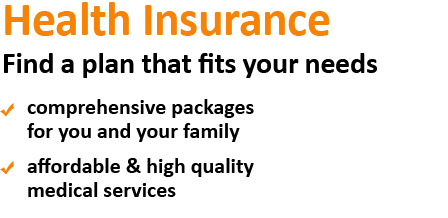Catastrophic Health Insurance
Catastrophic health insurance coverage is a high deductible, low premium health plan. This type of plan typically does not cover regular doctor visits, but is designed to cover major medical expenses for the person who is generally healthy, but does not need the services of a medical professional except in the event of an unexpected illness or accident.
Catastrophic health insurance coverage is designed for the healthy person who seldom sees a doctor for routine medical checkups and has no outstanding health issues. It is a health care insurance plan option that can money savings in the premium payment department but will have a high deductible in the event of hospitalization or other major medical expenditure.
Those that will not qualify for catastrophic health insurance are those with a pre existing condition such as heart disease and diabetes, AIDS, emphysema and COPD to name but a few. When looking into catastrophic health insurance, your health care insurer will be able to tell you if you qualify for such insurance or not.
Any age group can qualify for catastrophic health insurance and it isn’t a bad option for those that are healthy and do not require the services of a medical professional. Those that tend to take advantage of such a program, in addition to healthy people who do not see a doctor very often, are those that are self employed and need a low cost health care choice, those that are employed but do not have what they consider to be sufficient health care through their employer, those that are unemployed but need an economical health insurance plan and those that are consciously looking for ways to save money in general.
The one drawback to catastrophic health insurance is, the insured must be able to pay the deductible, which will be anywhere from $1k and up. In the event of hospitalization, you will have to pay that deductible limit before receiving any financial benefit from the insurance policy. Those that choose the catastrophic option should always have the amount of the deductible available in the case of a medical emergency.
Catastrophic health insurance plans can be paired with a health savings plan that allows the insured to set aside pre tax dollars to be used for out of pocket medical expenses currently or during retirement, including the deductible. The insured must have a savings account to collect the pre tax set asides and be able to support the yearly deductible in the event of an illness or injury.
To qualify for the health savings plan, the catastrophic health insurance plan must have a deductible of $1.2k per year for an individual or $2.4k for a family plan. Out of pocket maximums must reach no more than $5, 950 for individuals and $11,900 for families. $3,050 pre tax dollars can be contributed to an HSA annually by an individual and up to $6,150 for a family. An additional $1,000 can be saved if the insured is age 55 or older. The money grows in the account tax free.
When funds are withdrawn, they are tax free as long as they are used for qualified medical expenses such as a deductible or medical expenses not covered under the plan. Those expenses can include vision and dental care. The money can also be saved for long term medical care not covered by Medicare.







